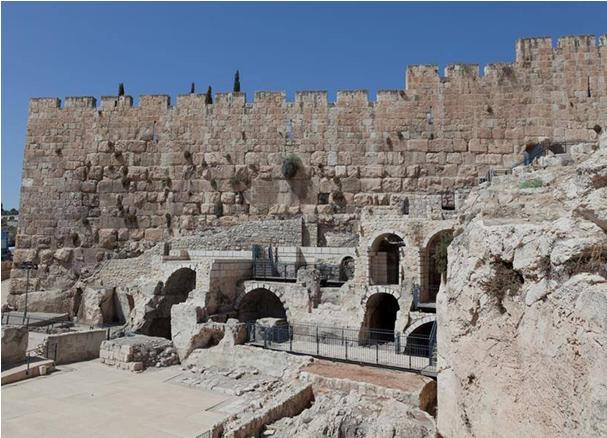How many mikvehs (Jewish ritual baths) does one need to change Jerusalem’s historic basin into an advertisement for the Second Temple? Never enough it would seem. Minister of Jerusalem Affairs, Ze’ev Elkin and Mayor Nir Barakat at the foothills of Temple Mount/Haram al-Sharif inaugurated last week a new tourist path called the “Ritual Baths Trail.” According to Emek Shaveh: “While the discovery of ritual baths and their conservation is part of important archaeological activity in Jerusalem, the considerations behind this new tourist attraction are completely political and present the city’s past in a way that is tendentious and unfaithful to the city’s cultural and religious diversity.”
In almost every archaeological excavation in the Old City and Silwan, when a waterhole is found and identified as a ritual bath (Mikveh), it undergoes conservation and is presented to the public. In ancient times, ritual baths were part of the Jewish way of life. The Jews shared this city with other groups such as Edomites and Samaritans. Over time, many of the ritual baths served other purposes: water reservoirs, sheds and more. However, in recent years, ritual baths in the historic basin are presented as “conserving the thousands of years old Jewish heritage” and usually as part of a of purification ceremonies en route to the Temple. The thirst for renewing the pilgrimage to the Temple Mount seems to be at its peak, if not in words then in actions. The creation of controversial “archaeological routes” and the heightened participation of right-wing politicians in launching ceremonies are part of a growing trend to dress Jerusalem’s ancient sites in exclusively Jewish religious and national symbols and dispense with the need to present Jerusalem as the multilayered, historically rich and varied city that it really is.
Emek Shaveh activists believe that archaeological findings should not function as a means to prove ownership by one people or one religion over a given tract of land. The archaeological finding is an integral part of local culture. “Archaeology teaches us about the cultures of the past and belongs to all peoples and faiths. The development of an archaeological site located within a built-up area cannot be justified if it ignores the local community. On the contrary, because they represent the most recent layer in a long history of cultures and societies, the current residents are a crucial part of the place, its story and its archaeology… Our goal is to undermine the perspective which sees the past as a possession of a particular religion or nation and a justification for hostile and immoral actions aimed against minorities. On the contrary, we see archeological activity as a means for initiating positive processes.”
Related:
Posts related to the archaeological perspective of Emek HaShaveh



